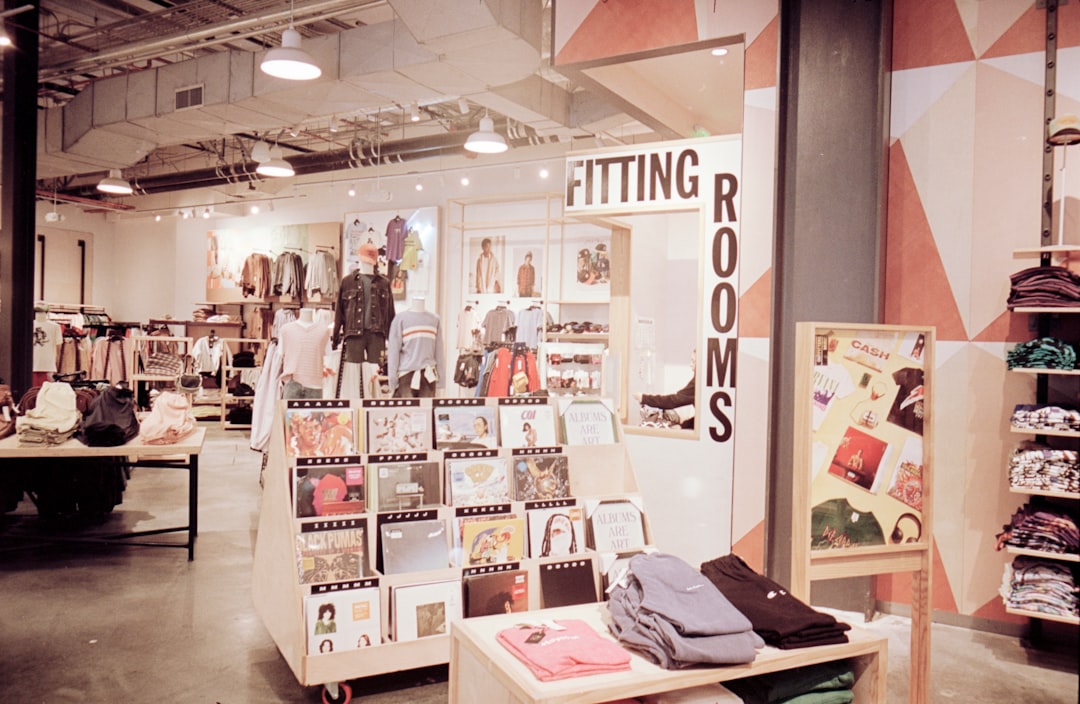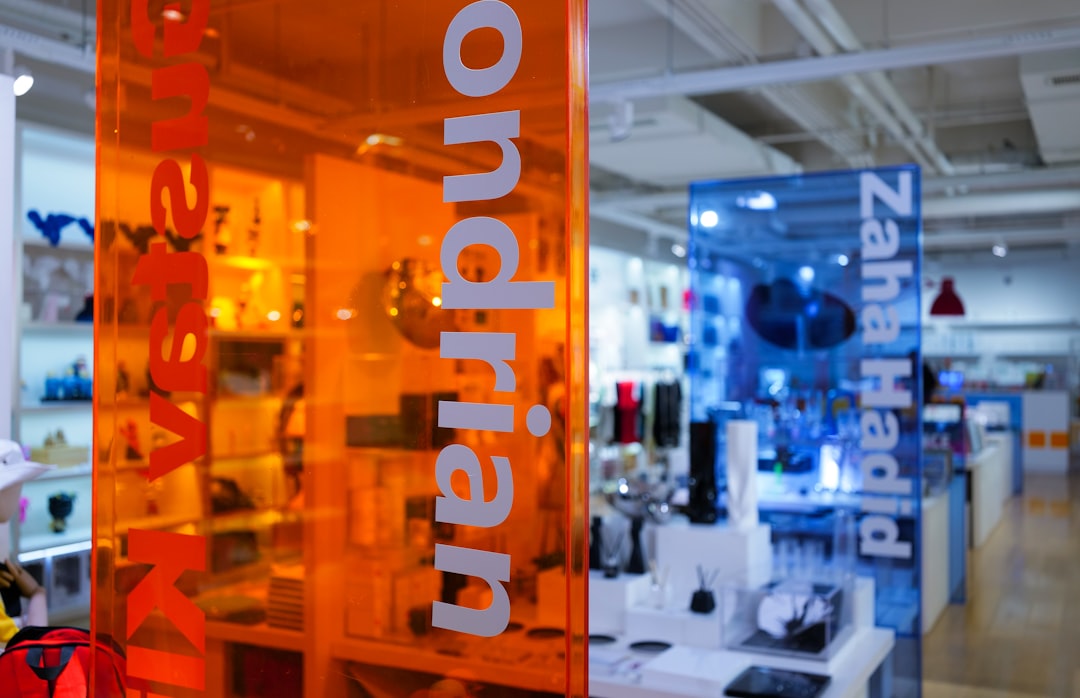

Engage prospects with a scan and streamline customer engagement with FREE QR code marketing tools by Sona – no strings attached!
Create a Free QR CodeFree consultation

No commitment

Engage prospects with a scan and streamline customer engagement with FREE QR code marketing tools by Sona – no strings attached!
Create a Free QR CodeFree consultation

No commitment
Catalog showroom retailers face increasing pressure to create seamless, high-converting interactions that bridge the physical appeal of catalogs with the efficiency and personalization of digital commerce. Missed opportunities arise when shoppers browse print catalogs but encounter static displays, or when potential leads investigate products anonymously, leaving no trail for follow-up. As consumers demand more relevance and instant access, analog methods like printed order forms and untracked foot traffic introduce blind spots, making it hard to capture and nurture valuable prospects. Explore Sona QR’s retail strategies.
QR codes in retail have swiftly become one of retail’s most flexible and scalable tools for transforming the showroom experience. With every scan offering a measurable, interactive opportunity, catalog and display interactions can now be deeply integrated with omnichannel engagement. This technology not only makes the customer journey more insightful and connected, but it also helps retailers understand who is engaging, which campaigns succeed, and where new growth opportunities are hiding.
This guide shows catalog showroom retailers how to use QR codes to simplify customer journeys, identify new leads, boost revenue, and optimize marketing spend. By addressing persistent gaps between physical and digital, these strategies empower brands to achieve measurable conversions and stronger loyalty, without complex or costly technology. See Sona QR’s take on QR codes in marketing.

Persistent challenges like manual order forms and low conversion visibility often slow down conversion efforts in catalog showrooms. Many retailers miss out on high-intent shoppers who browse, compare, or even express interest but never fill out a form or create a digital trail. QR codes provide a pathway to upgrade these static touchpoints, converting curiosity into action while capturing every engagement.
The shift is not just about adding a scannable square to a page. It is about designing a more fluid journey that respects how shoppers evaluate products: they browse a catalog, touch a display piece, check reviews on their phone, and then decide. By placing QR codes at decision points and connecting them to clear next steps like adding to cart, reserving in-store, or chatting with an associate, you make it simple to say yes in the moment, and you record the engagement for timely follow-up.
Through smarter QR deployment, every in-store or catalog interaction becomes a potential conversion. You gain a systematic way to follow up on interest that was once impossible to trace, while shoppers get a faster, more helpful path to the right product.

A critical hurdle for many catalog showroom retailers is the inability to see who is engaging with physical assets, leaving a gap between brand interest and actionable insights. A customer may dog-ear a catalog page, snap a photo of a price tag, or browse quietly through a showroom, then leave without a single data point to signal intent. QR codes transform those physical interactions into measurable digital events, illuminating the path from first interest to final purchase.
Unlike traditional signage or forms that provide limited feedback, QR codes unlock both interaction and measurement. They allow you to capture context like location, time of day, and the specific display that triggered interest. This makes it possible to attribute revenue to the right placements, identify bottlenecks in the showroom journey, and refine merchandising with confidence.
Common placements like catalog pages, display fixtures, receipts, and direct mailers become dual-purpose. They guide buyers toward rich information or purchase actions, and they funnel granular engagement data back to your team for smarter merchandising, marketing, and sales execution. For inspiration on store-level deployments, explore these in-store QR ideas.

Poor engagement and a lack of actionable data often stem from one-size-fits-all displays that do not match buyer intent. QR codes are flexible enough to serve specific goals at different points in the shopper journey, helping retailers move people from interest to action while capturing valuable context.
For catalog showroom retailers in particular, a mix of dynamic and static QR codes can support everything from product discovery to post-sale engagement. The key is to select formats that align with the task at hand and the environment where the code will be scanned.
With Sona QR, retailers can generate all of these formats, maintain dynamic destinations, and manage campaigns from a single dashboard. Use dynamic codes for any destination that needs tracking, personalization, or frequent updating. Reserve static codes for fixed assets like store Wi-Fi or evergreen resource links.

Revenue is often left on the table when meaningful showroom interactions do not lead to digital engagement or follow-up. Growth comes from instrumenting the moments when interest peaks, then providing a clear, scannable path to the next step. Catalog showroom retailers should prioritize placements that align with natural buyer behavior inside and outside the store.
Map your physical environment to the buyer journey, then layer QR codes where they support discovery, evaluation, and conversion. The result: higher scan rates, richer intent data, and more opportunities to retarget with relevance.
This approach not only elevates engagement at high-dwell areas, it gives retailers a new lens into customer journeys that traditional footfall counters cannot provide. Over time, the data informs merchandising choices, staffing priorities, and marketing investment.
Catalog showroom retailers encounter the same friction points repeatedly: anonymous interest, slow or missed follow-ups, and limited insight into what actually drives conversion. Addressing these with concrete QR use cases helps move browsers to buyers and ensures every interaction leaves a digital footprint you can use.
The right use cases map to your most common customer interactions. Think of the questions customers ask most often and the decisions they delay when they lack confidence or convenience. Then let QR codes deliver answers in the moment.
By systematically converting each showroom touchpoint into an action you can measure, you create a pipeline of qualified prospects and a feedback loop that strengthens merchandising and service.
Every QR scan is a signal that can help you understand who a shopper is and what they care about. When you deploy distinct QR codes across key touchpoints, you transform anonymous, offline engagement into segmented audiences that power more precise retargeting and more relevant experiences.
Catalog showroom retailers can segment by product interest, funnel stage, store location, and time of engagement. This allows you to tailor follow-ups, such as sending a reminder to complete a purchase, offering a care kit, or inviting the scanner to an in-store event for the collections they explored.
In practice, this means you can distinguish between design-savvy browsers drawn to new collections and urgent buyers scanning at checkout. Both are valuable, but they need different paths and incentives to convert. For campaign tactics, see Sona’s Playbook intent-driven retargeting.
Many catalog showroom retailers operate in silos where store operations, print marketing, digital advertising, and CRM all run on separate tracks. QR codes operate as connectors across these channels, enabling real-time engagement and creating a coherent data stream that respects the customer journey.
By treating QR codes as the offline onramp to your digital marketing engine, you unify physical and digital experiences and unlock a new layer of measurement. This makes traditional channels like catalogs and direct mail as measurable as email and paid media. See Sona’s offline attribution guide.
With a centralized platform like Sona QR, you can manage all codes, monitor cross-channel performance, and sync scan data with your CRM and ad platforms. Over time, you build a connected offline-to-online funnel that improves both customer experience and marketing ROI.
Catalog showroom retailers often deploy QR codes piecemeal, which leads to poor engagement and little proof of ROI. A methodical approach ensures each code is tied to a business outcome, designed for the environment, and monitored for continuous improvement.
Start by aligning each QR placement to a specific objective such as scan-to-buy from high-value displays or automated lead capture from catalogs. Then select code types and destinations that support that goal, test rigorously in-store, and connect analytics to your CRM so you can turn insights into action.
Focus the campaign on a clear outcome and a specific audience. This prevents scattershot deployments and helps you measure impact.
Select static or dynamic codes based on how much flexibility and tracking you need.
Make the code unmistakable, scannable, and benefit driven. Test it in the lighting and distances your customers will experience.
Place codes where decisions happen and where you currently lack measurement.
Use analytics to learn, improve, and scale. Treat every code like a testable asset.
By following these steps, you create repeatable, scalable QR programs that turn foot traffic and catalog browsing into measurable business outcomes.
A persistent frustration in catalog showroom retail is fuzzy attribution. Without clarity on which catalogs, displays, or campaigns influenced a sale, it is difficult to defend budgets or refine strategies. A robust analytics framework changes the conversation by connecting scans to downstream outcomes and revenue. For frameworks, see Sona’s blog on single vs multi-touch attribution models.
Think of tracking as both measurement and activation. Yes, you want to see who scanned and when. More importantly, you want to act on that signal: prioritize sales outreach, trigger an incentive, or invite someone to a consultation. When your analytics platform connects scans to profiles and revenue, you can shift spending to what truly works.
With Sona QR handling first-party scan data and Sona.com linking those signals to outcomes, your team can demonstrate ROI for print and in-store investments with the same confidence you have in paid media.
Maximizing QR performance is not only about capturing high-intent visitors in the moment, it is about turning each scan into a durable advantage. The following practices help teams build better journeys, stronger data, and higher conversion over time. For more ideas, explore these retail QR strategies.
Focus on three levers: instrument more high-value placements, enrich data quality with clean attribution, and build automation so the follow-up is instant and relevant. Then add creative touches that make scanning feel useful and rewarding.
Implementing these practices elevates QR from a simple link to a strategic data and conversion engine. It also creates a virtuous cycle where every campaign informs the next.

Adoption of QR technology has helped catalog showroom retailers close the gap between physical browsing and digital action. The most successful programs combine compelling experiences with rigorous measurement and responsive follow-up.
Consider how these scenarios turn static assets into high-performing channels while enriching data and lifting conversions. Use them as a starting point for your own experiments and iterate quickly based on results.
These examples share a common refrain: make scanning worthwhile for the customer and meaningful for your data. When you do both, ROI follows.
Sustainable QR success depends on aligning design, placement, and follow-up with shopper behavior in the showroom. While the technology is simple, execution details can make or break performance. Keep your focus on scannability, clear value, and measurable outcomes.
Pilot in a few stores or catalog sections, learn quickly, and scale what works. Most failures come from weak CTAs, poor placement, or an unclear post-scan experience. Design the destination experience with the same care as the code itself.
By avoiding these pitfalls and investing in education, customer experience, and continuous optimization, catalog showroom retailers transform QR codes from novelty to necessity.
QR codes have become a strategic lever for catalog showroom retailers determined to bridge the analog-to-digital divide. When thoughtfully implemented, they solve familiar pain points like invisible high-value prospects, insufficient segmentation, and missed follow-ups by transforming every aisle, display, and page into an interactive, insight-rich touchpoint.
Smart deployment and tracking allow retailers not only to meet rising consumer demands for convenience and personalization, they also capture the kind of actionable engagement data that fuels more effective marketing and longer-lasting customer relationships. With Sona QR for scan creation, management, and analytics, and Sona.com for identity resolution and revenue attribution, you can connect scans to outcomes with clarity. Start creating QR codes for free.
QR codes have transformed catalog showroom retailers from traditional, static browsing experiences into interactive, measurable conversion engines. Whether it’s driving new customer acquisition, enhancing in-showroom engagement, or streamlining product discovery, QR codes replace guesswork with instant, data-driven actions that turn every catalog item into a dynamic sales opportunity. Imagine knowing exactly which product displays or promotions spark interest—and being able to optimize your campaigns in real time to maximize revenue.
With Sona QR, creating dynamic, trackable QR codes is effortless. Update your marketing campaigns instantly without costly reprints, connect every scan directly to customer behavior insights, and seamlessly link offline showroom visits to online sales. No missed leads, no wasted resources—just smarter, more effective catalog showroom retail strategies.
Start for free with Sona QR today and transform every scan into a meaningful connection, engagement, and conversion.
QR codes provide instant access to product reviews, availability, and digital carts, simplify checkout and consultations, and create a seamless journey that connects physical browsing with digital actions.
Best practices include placing QR codes at decision points, using dynamic codes for editable destinations, adding clear calls to action, testing scannability in real conditions, and integrating scan data with CRM systems.
QR codes capture detailed scan data such as location, time, device, and specific display, enabling retailers to measure engagement, segment customers by behavior, and attribute revenue to specific campaigns or placements.
Examples include a furniture retailer using AR-enabled QR codes in catalogs to increase conversions by 30 percent, an electronics chain using QR codes for product comparisons resulting in 22 percent more consultations, and fashion retailers driving after-hours engagement through window display QR contests.
Retailers can boost sales and loyalty by using QR codes to capture high-intent leads, enable scan-to-buy or reservation options, automate personalized follow-ups, gather customer feedback, and create engaging digital experiences tied to physical assets.
Use Sona QR's trackable codes to improve customer acquisition and engagement today.
Create Your FREE Trackable QR Code in SecondsJoin results-focused teams combining Sona Platform automation with advanced Google Ads strategies to scale lead generation

Connect your existing CRM

Free Account Enrichment

No setup fees
No commitment required

Free consultation

Get a custom Google Ads roadmap for your business






Launch campaigns that generate qualified leads in 30 days or less.
